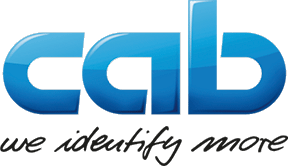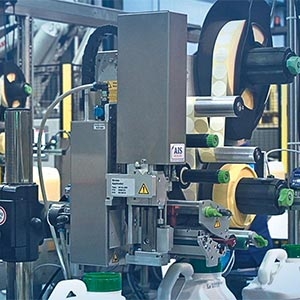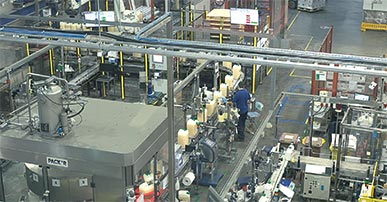DataMatrix code printed on canister caps:
Traceable crop protection with the help of Hermes+
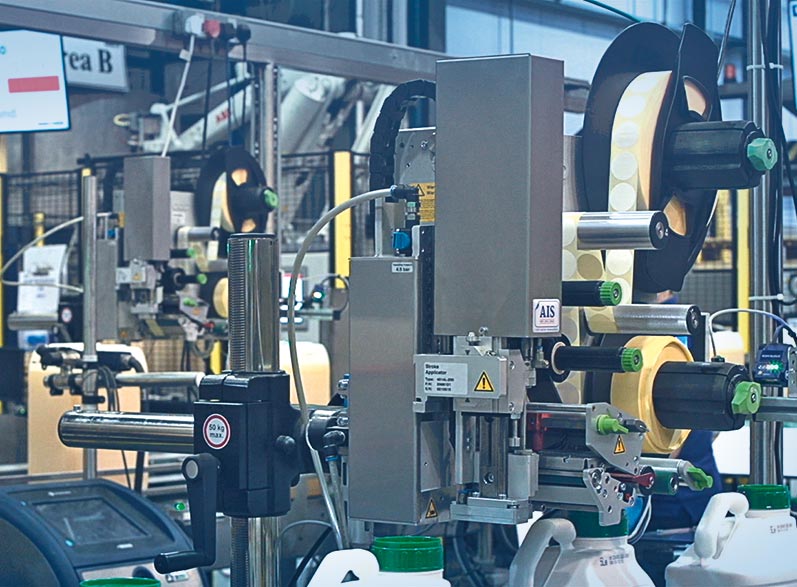
Damastown Industrial Park is situated about 20 kilometers northwest of Dublin city centre, which is home to Barclay Chemicals, a leading manufacturer of crop protection products in Europe. The facility has 1,300 m² of onsite warehousing and packing. As liquid fungicides and herbicides are classified hazardous, the information displayed on the canisters and their packaging need to strictly comply with legal regulations.
A total of three to four marking systems - inkjet printers, labelling machines and applicators with a thermal printer integrated - on each conveyor line ensures full traceability of each product back to the original raw material. Hermes+ systems print encoded labels and apply them automatically on the canister caps and cardboard boxes. The Hermes+ have been integrated into the plant by AIS Ltd, Irish distribution and service partner of cab.
Hermes+ systems consist of a print unit and a module to transfer labels onto products. If requirements change, such as the product to be marked or the size of a label, Hermes+ can be adapted. In Barclay‘s case, cab and AIS opted for the 4014 applicator to expand the print unit for automatic labelling. Printed labels are transferred on top of a canister cap or next to a cardboard box by a stroke cylinder and are tamped or blown onto the product by a pad.
Insights from the parties involved
What have been Barclay‘s recent requirements on labelling? Instead of a common interview, we let Barclay‘s IT Manager Martine Denihan, Barclay Production Supervisor Pat Groves, and AIS Managing Director Noel McKearney do the talking and exchange thoughts among one another.
Denihan: As regards marking, the agrichemical sector sets specific demands. The information displayed on the labels of our products is critical for the end user. Take dates of manufacture, locations of bottling, pack sizes as examples, right through to the raw materials included in the product. By scanning the cap label of a Barclay product, a farmer is offered a database with the key information.
McKearney: Last year, you called AIS to come in and rethink your labelling solution. It was France that got this started.
Denihan: A group of suppliers and customers in the agri industry formed an association group called Agri EDI. Their purpose is to manage the systems and define the specifications around a new standard called SC trace. This standard was to provide full traceability across the supply chain. It required a 2D DataMatrix code on all products for France initially and thereafter other European countries. The encoded information includes the GTIN, batch number and date of manufacture. For Barclay, this was a ‘do-or-die’ situation. If we did not adapt to this, we would lose our French customers.
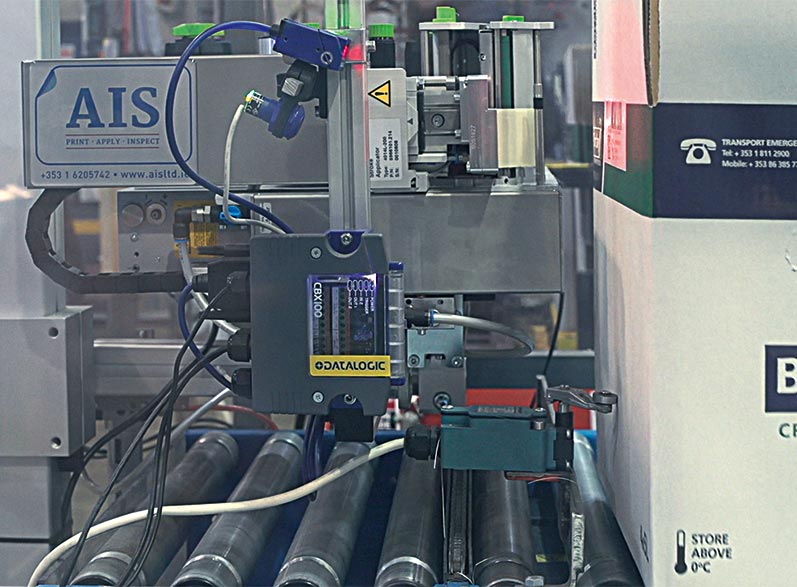
- Getting ready for transport
Post-scanning ensures that the right label has been applied on the product, in this case a cardboard box.
McKearney: Initially you started using methods you already had in-house - such as an existing inkjet printer to print the data directly onto the side of the canister.
Denihan: However, inkjet did not work with the plastic canister, it resulted in smudging. According to the AIM DPM quality directive, the printed codes needed to be class A. We needed to print the 2D onto a label in black on white. The difficulty was we had no place on our existing comprehensive labels which could be dedicated to print the 2D code. It was then we called AIS, who suggested we print the label on the cap of each canister. This was a magic solution for us as we could print each label in the same position for all products per line and not involve the product label.
McKearney: As regards the hardware to apply the labels, the challenge was to find one system that would fit across the five litre lines as well as the five litre PET lines and the 20 litre lines. There was a number of reasons why we chose a cab system. Firstly, we have a very good working relationship. cab sees a benefit in having partners and closely works with them. They are not just supplying pieces of equipment, but are jointly working with us on the solution and provide all the input that is required. In technical terms, the small footprint of Hermes+ was a powerful argument. It is no bigger than most of the label printers, and comparatively smaller than the print and apply units provided by other manufacturers. A further reason was the flexibility. Applicators are detachable from the actual Hermes+ print engine so you can easily switch to another application. This is very unique in that aspect. Pat, from the engineering point of view, what do you think of the cab machines?
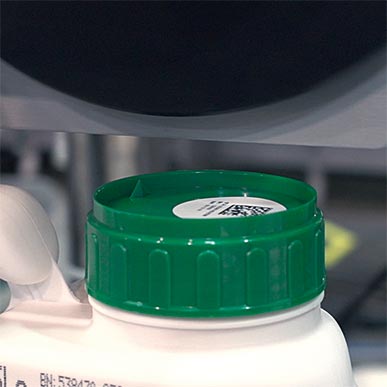
- No touch with the product surface
In case of recessed canister caps, labels are blown on by air jet.
Groves: Coming from the production point of view, I can say we are happy. We need machines on our lines that do not cause bottlenecks. The Hermes are smart enough to fit in right where we want them. They are German-built which tells us they are reliable. I cannot argue with the hardware, it is very solid and reliable. It does exactly what Barclay wants and more.
McKearney: Previously, data had been entered to each printing or labelling system manually. This course of action lead to errors, human errors. So we suggested to implement a software solution directly linked with the ERP system.
Groves: This was a huge bonus. It was challenging to get the software to communicate to all the other printers. But we finally got there, it saves minutes of each work order.
Denihan: When we started into this, our aim was to get as much value from the project besides putting the label on the product. Another label machine on the line was adding to the work of each operator to reduce. AIS provided a software solution which integrated data from our ERP system by scanning the work order into all our printing machines on each line. So that has taken a huge headache out of the process for the operator.
McKearney: Sounds good. Looking back, we started this project as a trial towards the end of 2017, when we put in one Hermes+. We had the test running for three months and it turned out to be very successful. Since then, a further five machines have been put in the production plants. Does the marking solution open up new markets for Barclay?
Denihan: While we did this for the French market, we are getting requests from other countries to provide a 2D matrix code. More than likely, it will be a EU regulatory requirement sometime in the future.
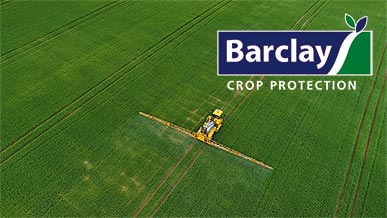
The family-owned company located in Dublin dedicates to the registration, manufacture and distribution of crop protection products for more than 30 years.
www.barclay.ie
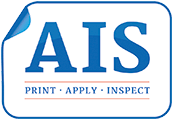
AIS Ltd “Automatic Identification Systems” supplies, installs and maintains label printers, labeling machines, barcode scanners and verifiers, as well as RFID systems to the Irish industry.
www.aisltd.ie
Products in use
Print and apply system Hermes+
January 2019
